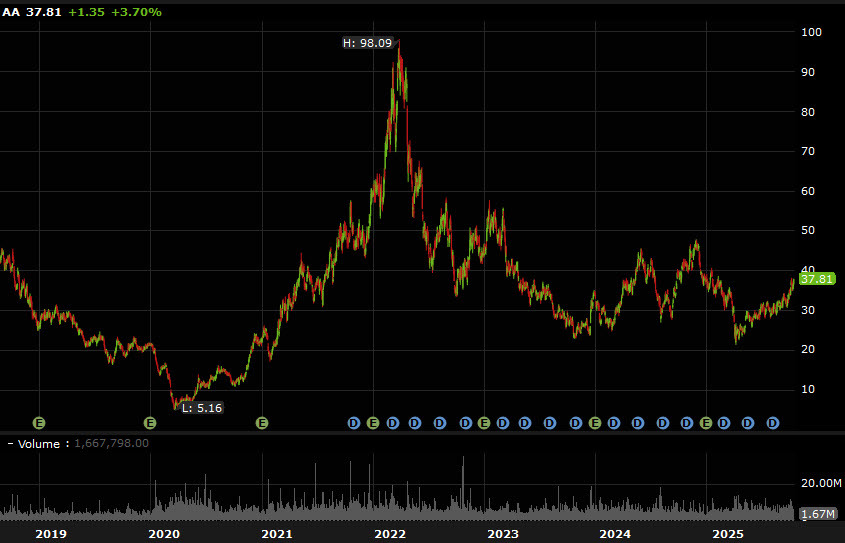Aluminum is at the center of several important dynamics right now.
One, it's subject to 50% US national security tariffs. Two, it's highly energy intensive at a time of rising energy prices. Three, it's useful in EVs/green energy. Four, it's going to be used in robotics. Five, it has a use case as a heat sink in data centers.
The Trump administration is trying to re-shore aluminum production but it will be competing for energy with the bottomless pockets of AI and datacenter demand.
The WSJ today writes about the dynamic, noting that aluminum prices haven't climbed much yet but that the conditions are there even without the ongoing political dynamics, in part because China is curbing capacity.
Analysts at Citi expect a rapid decline in the global surplus of primary aluminum through 2026, and then a deficit of about 1.4 million tons, representing about 2% of primary consumption, starting in 2027. Wood Mackenzie expects a deficit starting 2028 and lasting about five years, according to Uday Patel, senior research manager at the energy research firm.
The challenging issue right now is the US-Canada trade deal as about 40% of US aluminum comes from Canada, primarily Quebec where hydro-electricity is cheap. This week, Canadian and US officials are working on a deal to lower the 50% tariffs.
The winner in that scenario could be Alcoa, which has about 75% of its North American production in Canada and trades at about 5x EBITDA and 13x earnings with minimal leverage. The company paid $95 million in Q2 tariffs and those have since escalated.





